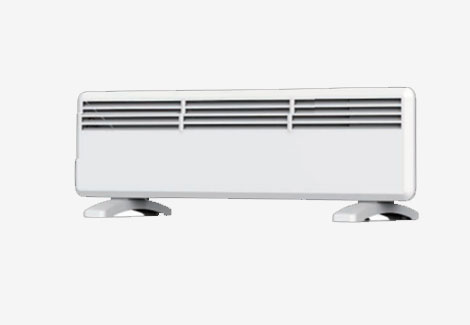As the winter season approaches, the need for a reliable and efficient heating system becomes paramount.
Among the various types of heaters available in the market, the convection heater is a popular choice, which has brought many chances for electric radiator manufacturers in recent years. However, how does it stack up against other types of heaters? This blog post will compare the convection heater with other heater types, including ceramic fan heaters, oil column heaters, oil-filled radiators, oil fin heaters, and radiant heaters.
Convection heaters work by heating the air that circulates around the room, providing consistent and even heat. On the other hand, ceramic fan heaters use a ceramic element that heats up and a fan that blows the warm air into the room.
Convection heaters are generally quieter as they don’t rely on a fan to distribute heat. They are also more energy-efficient and better suited for heating larger spaces. Ceramic fan heaters, however, heat up faster and are more portable, making them ideal for quick heating in smaller areas.

Oil column heaters, also known as oil-filled heaters, use electricity to heat oil within the unit, which then radiates heat into the room. Compared to convection heaters, oil column heaters take longer to heat up but retain heat for a longer period, even after being switched off.
While convection heaters provide quicker heat and are more energy-efficient, oil column heaters are safer to touch, making them a better option for households with children or pets.
Oil-filled radiators work similarly to oil column heaters, using heated oil to radiate warmth into the room. The main difference between convection heaters and oil-filled radiators lies in their heating method.
Convection heaters provide a more uniform heat distribution, making them ideal for larger spaces. Oil-filled radiators, however, are more energy-efficient in the long run as they retain heat longer, making them suitable for continuous use in smaller rooms.
Oil fin heaters are a type of oil-filled heater with large surface areas for better heat distribution. Compared to convection heaters, oil fin heaters are slower to heat up but provide a more consistent temperature over time.
While convection heaters are better for quick heating and larger spaces, oil fin heaters are more efficient for prolonged use and provide a safer, surface-touch temperature.
Radiant heaters work by directly heating objects and people in their path, making them a great choice for targeted heating. In contrast, convection heaters warm the air, providing a more even heat distribution.
While radiant heaters provide immediate warmth in their direct line of sight, they don’t heat the entire room evenly. Convection heaters, on the other hand, provide a consistent room temperature, making them a better choice for whole-room heating.
The choice between a convection heater and other types of heaters largely depends on your specific needs. If you need quick, even heating in larger spaces, a convection heater is a great choice. For targeted heating or continuous use in smaller rooms, you might want to consider an oil-filled or radiant heater.
Remember, each type of heater has its strengths and weaknesses. It’s all about finding the right tool for the job. So, the next time you’re shopping for a new heater, keep these comparisons in mind and choose the one that best suits your needs.